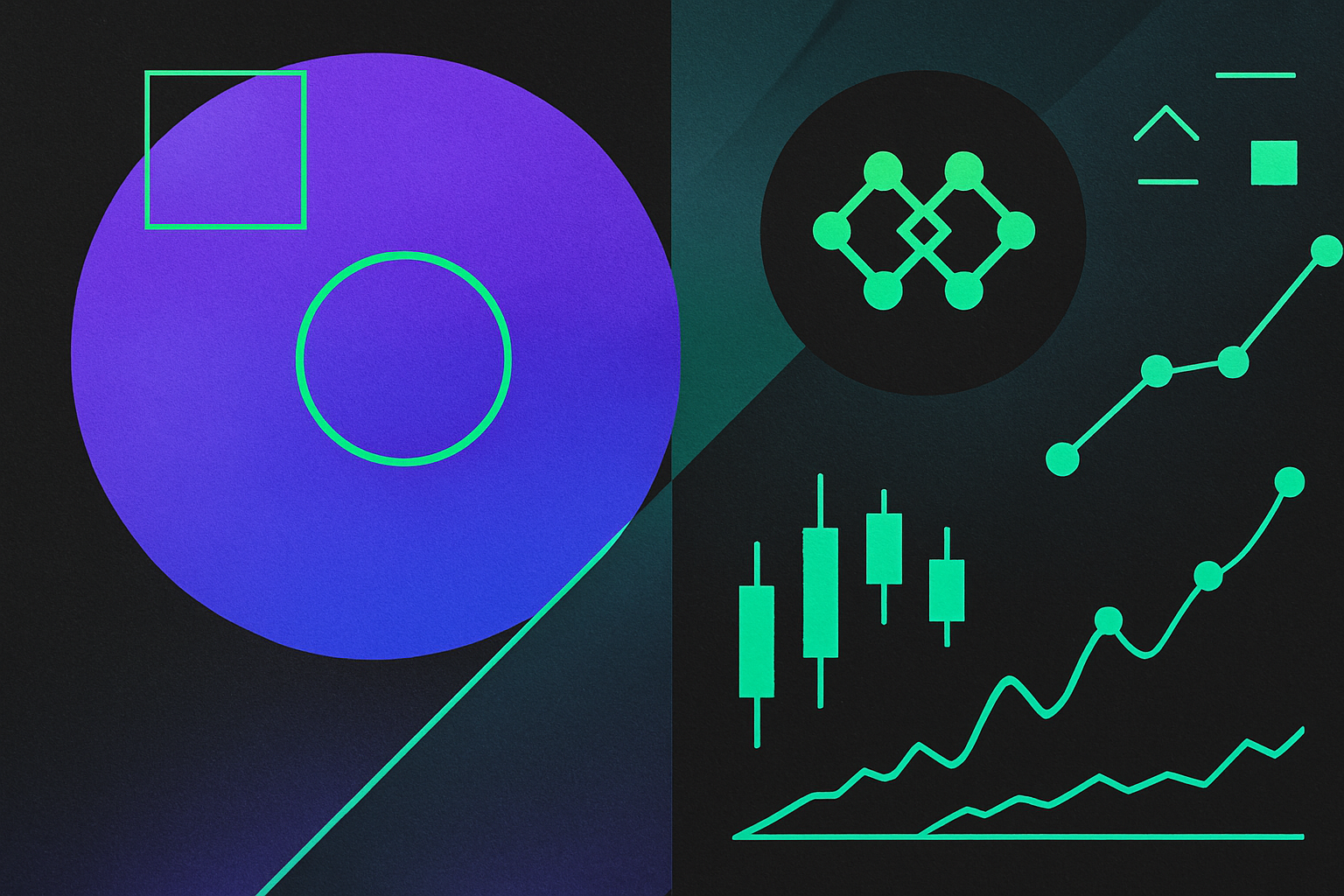How Celestia’s Blobspace Pricing Impacts L2 Rollup Costs: Real-World Analysis for Traders and Developers

Celestia’s blobspace pricing has rapidly become a linchpin in the economics of Layer 2 (L2) rollups, fundamentally reshaping how traders and developers approach transaction costs and data availability strategies. With Celestia (TIA) trading at $1.01 as of today, the cost landscape for posting data blobs is shifting, offering both new efficiencies and competitive pressures for L2 operators seeking to optimize margins and user experience.
Why Blobspace Pricing Matters for L2 Rollup Costs
At the heart of modern blockchain scaling lies the challenge of data availability (DA). L2 rollups, which bundle transactions off-chain and post proofs on-chain, rely on affordable, scalable DA solutions. Historically, Ethereum’s limited blob capacity and volatile fees have been a major pain point. Even after Ethereum’s Dencun upgrade in March 2024 slashed optimistic rollup costs by up to 98%, high-throughput L2s still faced bottlenecks due to constrained blob space and fee spikes during periods of network congestion.
Celestia offers a compelling alternative. By decoupling consensus from DA and enabling larger blob sizes (up to 2 MiB) with an impressive daily throughput (about 117.8 GB), Celestia allows L2s to post transaction data at a fraction of Ethereum’s cost. In late 2024, the price to post 1 MiB of data on Celestia was approximately $0.07, compared to Ethereum’s staggering $66.88 for the same payload over a seven-day rolling average. This dramatic difference is more than a technical detail, it’s a fundamental shift in cost structure that can determine whether an L2 is profitable or priced out of the market.
Current Market Trends: Celestia’s Advantage in Numbers
The market has responded decisively to these cost efficiencies. By the end of 2024, Celestia was generating over $2,000 per day in blob fees, a nearly tenfold increase from just months prior. This surge signals not only increased adoption but also growing trust among developers who require predictable, low-cost DA for their applications. As more L2s migrate or expand to Celestia, traders are seeing tighter fee spreads and more opportunities for arbitrage across DA providers.
For a deeper dive into these adoption trends and their implications on blob pricing, see our analysis at Celestia Blob Usage Trends: Analyzing the Surge in Blobs Per Block and Market Implications.
Ethereum’s Fusaka Upgrade: Competitive Pressure or Temporary Relief?
The competitive landscape is far from static. Ethereum’s Fusaka upgrade, currently rolling out with features like BPO forks for dynamic blob capacity scaling, aims to address its historical limitations. Initial increases in blob limits (from 6 to as many as 15 per block) could reduce L2 fees by up to 30%, offering temporary relief for rollups that remain Ethereum-centric. However, market analysts note that these upgrades may also introduce new volatility in blob pricing as demand surges during peak periods.
Despite these improvements, Celestia remains approximately 64% cheaper than Ethereum for data availability services according to recent studies. This cost gap is critical for rollup operators making long-term infrastructure decisions. For those considering migration or multi-DA strategies, monitoring both Celestia’s evolving fee structure and Ethereum’s ongoing upgrades is essential for maintaining a competitive edge.
Celestia (TIA) Price Prediction 2026-2031
Professional outlook based on blobspace demand, L2 rollup adoption, and DA competition (2026-2031)
| Year | Minimum Price | Average Price | Maximum Price | YoY % Change (Avg) | Market Scenario Insights |
|---|---|---|---|---|---|
| 2026 | $0.85 | $1.20 | $2.00 | +18.8% | Potential consolidation as Ethereum DA upgrades intensify, but Celestia maintains relevance due to cost advantage. |
| 2027 | $1.00 | $1.55 | $2.80 | +29.2% | Growing L2 adoption of Celestia; increased blobspace demand drives price, but Ethereum’s Fusaka upgrade caps upside. |
| 2028 | $1.25 | $2.10 | $3.50 | +35.5% | Celestia’s modular DA dominance peaks; competition from Ethereum and new DA solutions emerges. |
| 2029 | $1.70 | $2.75 | $4.20 | +30.9% | Market matures; regulatory clarity and enterprise adoption support steady growth, but volatility remains. |
| 2030 | $2.00 | $3.25 | $5.00 | +18.2% | Blobspace demand stabilizes; interoperability with other L1s/L2s enhances utility, but price growth slows. |
| 2031 | $1.80 | $3.60 | $5.80 | +10.8% | Potential saturation of DA market; competition intensifies, but Celestia remains a leading DA provider. |
Price Prediction Summary
Celestia (TIA) is poised for steady growth through 2031, driven by increasing adoption of modular data availability solutions by L2 rollups. While Ethereum’s Fusaka upgrade and new EIPs present competitive challenges, Celestia’s cost efficiency and scalability position it as a preferred DA layer for high-throughput rollups, especially in the next 3-5 years. However, as the DA market matures and competition intensifies, price volatility and growth rates may moderate.
Key Factors Affecting Celestia Price
- Adoption rate of L2 rollups and preference for Celestia’s blobspace over Ethereum’s DA solutions.
- Impact of Ethereum’s Fusaka upgrade (BPO forks, EIP-7918) on DA pricing and capacity.
- Regulatory developments affecting DA providers and rollup ecosystems.
- Market cycles and macroeconomic conditions influencing crypto investment flows.
- Technological improvements in Celestia’s scalability, security, and interoperability.
- Emergence of new DA competitors or alternative scaling solutions.
- Enterprise and institutional adoption of modular blockchain infrastructure.
Disclaimer: Cryptocurrency price predictions are speculative and based on current market analysis.
Actual prices may vary significantly due to market volatility, regulatory changes, and other factors.
Always do your own research before making investment decisions.
The next section will explore practical strategies for traders and developers looking to optimize transaction timing, manage fee volatility, and leverage real-time analytics in the fast-evolving blobspace markets.
Real-World Strategies: Optimizing L2 Costs with Celestia’s Blobspace
For both traders and developers, the key to capitalizing on Celestia’s blobspace pricing lies in timing, analytics, and fee optimization. With $1.01 as the current Celestia (TIA) price, the economics of data posting are more transparent and predictable than ever. Yet, maximizing cost-efficiency requires a nuanced approach to market dynamics and a toolkit of best practices.
- Monitor Blobspace Congestion: Celestia’s gas-price prioritized mempool means that posting data during periods of low network activity can yield significant savings. Developers should leverage blob market analytics to identify optimal windows for batching and submission.
- Batch Transactions Intelligently: The larger blob size (up to 2 MiB) enables rollups to aggregate more transactions per post, smoothing out per-user costs and reducing the impact of short-term fee spikes.
- Dynamic Fee Adjustment: Use real-time blobspace pricing data to adjust fees on the fly. This is especially important for projects operating across both Ethereum and Celestia, as cross-chain fee discrepancies can open up arbitrage opportunities or expose operators to unnecessary costs.
- Leverage Blob Market Analytics Tools: Platforms like Blobspace Markets provide dashboards for tracking historical fee trends, blob counts per block, and capacity utilization. These insights empower informed decisions and proactive risk management.

For a detailed guide on analyzing Celestia data blob pricing trends and making the most of real-time analytics, visit How to Analyze Celestia Data Blob Pricing Trends on Blobspace Markets.
Risks and Forward-Looking Considerations
While Celestia’s cost advantage is clear today, the landscape remains fluid. Ethereum’s Fusaka upgrade could stabilize some of the price volatility that has historically plagued its blobspace, and future protocol changes may further narrow the cost gap. Meanwhile, Celestia’s own fee structure and validator incentives will evolve as network adoption grows and competition intensifies.
For L2 operators, the risk isn’t just about absolute costs, but about predictability and scalability. Volatile blob fees can erode margins or force sudden shifts in infrastructure. Monitoring both Celestia and Ethereum’s upgrade roadmaps is essential for anyone staking capital or building long-term applications in this space.
For a closer look at how blob count per block impacts Celestia pricing and market opportunities, see How Blob Counts Per Block Impact Celestia Blobspace Pricing and Market Opportunities.
The Bottom Line for Traders and Developers
Celestia’s current blobspace pricing model, anchored by a $1.01 TIA price and low per-MiB posting fees, offers a powerful lever for reducing L2 rollup operating costs. However, sustainable competitive advantage requires more than just chasing the lowest fees. It’s about building robust analytics pipelines, timing submissions strategically, and staying agile as the DA landscape matures.
The coming months will be pivotal. As Ethereum’s Fusaka upgrade rolls out and Celestia’s adoption accelerates, expect new rounds of price discovery and market innovation. For those who understand the interplay between blobspace pricing, network congestion, and protocol upgrades, the opportunities are immense.







